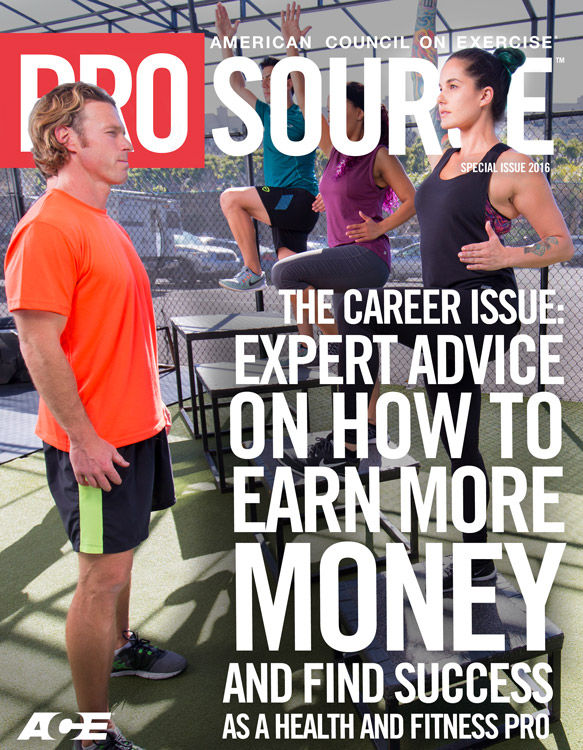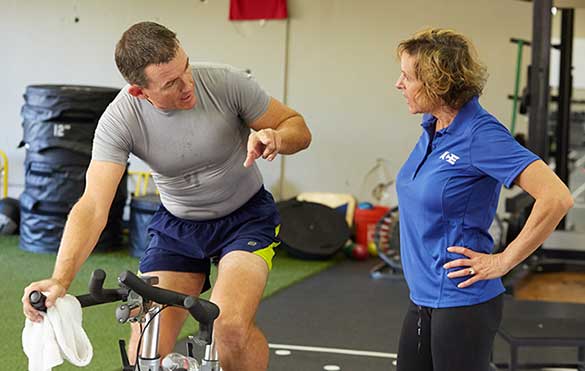
Several years ago, an opportunity presented itself to me (O.K., it pretty much fell in my lap). After talking with a friend at a ballgame, the owner of a building with a gym told her he'd love to have a studio added to the building that could offer classes and personal training. A business relationship was instantly formed and I was off and running.
The studio space was exactly what I had envisioned through the years when I dreamed about owning my own studio. It was in an old school room, about 900 square feet, with huge windows, a wood floor and wainscoting lining the walls. What was originally the coat closet for the students became the perfect space to store stability balls. An old armoire was ideal for holding mats, medicine balls, tubing and smaller dumbbells. I was living my dream.
I took out a small business loan of $5,000 to purchase the equipment I would need and used The ACE Fitness and Business Forms Handbook for legally prepared forms. For classes, members were given the option of paying per class, purchasing a 10-class punch card or buying a renewable and unlimited monthly class membership.
The owner of the building supported my endeavor, as he saw it as a way to draw people to his gym, so we worked out a combo membership fee that included memberships to both his gym and my studio. He also knew how difficult it can be to get a business up and running, so instead of setting a flat fee for rent, he suggested a percentage of my membership fees. I paid 30 percent of my monthly memberships as rent, which took a lot of pressure off of me.
Are you thinking of opening your own studio? While I had to sort of muddle through the process, you get to learn from the pros that have been there. All have made mistakes along the way, but all have been successful in their journey and are willing to share their inside secrets with you.
Debi Teeple, Living Fit Rx in Fishers, Indiana
What year was your studio established?
2012
What type of business is it?
Sole proprietorship
Are you incorporated?
Yes
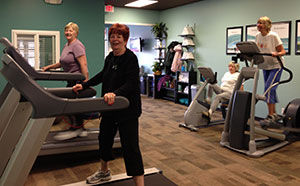
What is the approximate square footage of your facility?
1,800 square feet
How much was your initial investment?
$75,000
What do you offer?
We specialize in private training and offer a small selection of group classes, as well.
What mistakes have you made in trying to grow your business?
We have done just about every type of print marketing that you can think of—mailers, magazine articles, flyers and inserts, plus Groupons—but most of my clientele come from client referrals or referrals from doctors, surgeons, therapists and other professionals. I could have saved thousands and used it to “massage” professional relationships or ride out the beginning years with less financial stress.
What advice would you give to other fitness professionals who are thinking of opening their own studio?
Know the business side of things. Most trainers open studios because they want to help people, but if you don’t know the business side of it, you won’t be able to keep your business open to help them.
What tools and resources have you used the most to help you in this journey and in what ways have they helped you?
We knew very little about marketing, so bringing in the assistance of professional marketers really helped us. Secondly, we contacted the Association of Fitness Studios (AFS). It has been extremely helpful and encouraging to be able to talk to them and glean wisdom from people who have more experience than me.
Mike D’Angelo, BodyEvolver Fitness and Training, Boston, Massachusetts
What year was your studio established?
2002
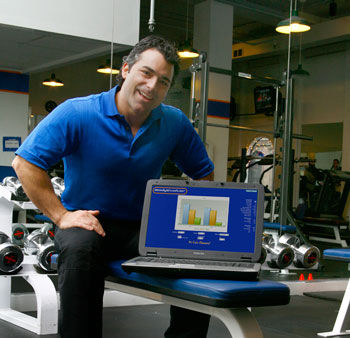
Is it a sole proprietorship or a partnership?
Partnership LLC
Are you incorporated?
Yes
What is the approximate size/square footage of your space?
5,000 square feet
How much was your initial investment?
$400,000
What classes and services do you offer?
We offered a lot of private training, small-group training and classes, as well as massage and chiropractic services.
What mistakes have you made in trying to grow your business?
Initially, we didn't know a thing about marketing and hadn’t set aside money to [promote our business]. It is critical to do your research and figure out how you fit into the local landscape and then market appropriately. I recommend everyone think this through ahead of time. Otherwise, it is really easy to flip flop with the message you are conveying and end up wasting a lot of money.
What advice would you give to other fitness professionals who are thinking of opening their own studio?
Bring in business partners that are nothing like you. Trainers love training and having fun and changing lives. You need someone on your team who likes to run numbers, pay bills and be the “bad cop.” Fortunately, I had that with my business partner.
What tools and resources have you used the most to help you in this journey and in what ways have they helped you?
At first, when you’re being frugal with money, it is good to barter services with other professionals that you can help and that can help you. Typically, you will have more time than money, so exchange time for services. For instance, the best thing I did was train for free a woman who was just opening a PR firm. I helped her get in amazing shape and she put us on the map with marketing and PR*.
*Note: Be sure to check with a qualified tax professional regarding how to report bartered services on your income tax.
Anything else you'd like to add?
If you want to grow your training business, priority number one is to track client progress in a tangible way. Have the capacity to show client return on investment and simplify their accountability for them by informing and educating them so they make smarter day-to-day decisions, leading to a better end result. Post before-and-after photos (with permission, of course) all over the walls to display what happens here for all to see (a “Wall of Fame”). The results you deliver to your clients by driving them to their goals sets you up for a referral business, which is the best kind of marketing.
Mike Beauchamp, John Garey Fitness and Pilates, Long Beach, California
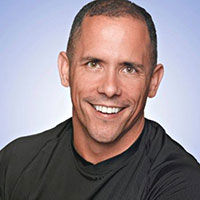
What year was your studio established?
2001
Is it a sole proprietorship or a partnership?
It’s a partnership with John Garey.
Are you incorporated?
Yes, it’s an S-Corp.
What is the approximate size/square footage of your space?
6,200 square feet split up into five separate spaces in an outdoor shopping center
How much was your initial investment?
$15,000-$20,000
What classes/services do you offer?
When we first opened, we focused on Pilates. Since then, we moved from our original 600-square-foot facility into a 1,200-square-foot facility and expanded over time. We added fitness-based classes and now offer more than 160 classes per week.
What mistakes have you made in trying to grow your business?
We’ve probably made them all over the years. The biggest ones include adding a second location 45 minutes away without sufficiently evaluating the market. It really drained our resources and management. Another big mistake we made was allowing our payroll costs to balloon by not fully thinking through the ramifications of moving from class package-based sales to unlimited class membership sales. This nearly did us in because we could no longer forecast the payroll. We ended up having to put a large amount of money into the business and ultimately made the painful switch to a flat-pay structure for classes.
What advice would you give to other fitness professionals who are thinking of opening their own studio?
Location, location, location applies in real estate and in fitness. Here are our keys to success:
- Find a place that has street visibility (or very visible signage).
- Find a place that has easy/plentiful parking.
- Find a place where you can expand (into neighboring units, etc.) or contract as needed.
- Start with a shorter lease with options to enter into a longer lease after the first year or two. It takes a while for a new business to grow, but if it’s not going to work you don’t want to be locked into a five-year lease right off the bat.
- Hire trainers and instructors as employees. I know there are different opinions on this, but we have always hired employees rather than bringing in independent contractors. We want the ability to control how they teach and train, to establish a reliable class schedule and to create a strong team culture. We also want to be the brand that the client affiliates with, instead of just a place where their trainer works them out.
- At first, do as much as you can on your own to build some reserves and get the word out about your business. However, don’t wait too long to hire other trainers, instructors and someone to handle the operation, finances and customer service. It’s really easy to burn out if you try to do it all, but really just want to work with clients. Many owners begin to resent the business they built because they waited too long to get help.
What tools and resources have you used the most to help you in this journey and in what ways have they helped you?
We were one of the original clients of MindBody Online when they first launched PilatesSoft. Since then, they have added many features that not only help us run our business (classes, appointments, point of sale), but they feature a really robust suite of reports that really help us make data-driven business decisions.
I joined the Association of Fitness Studios (AFS) a little over a year ago and initially utilized the discounts available for services such as liability insurance. This year I joined a small roundtable group of studios for monthly calls that are facilitated by Josh Leve, the founder of AFS. These forums are an excellent resource for us, because the other studios are similar in size and function and have similar growth plans. I have also found value in the annual surveys that AFS conducts, because they allow me to benchmark our business against other similar businesses (vs. other industry surveys that are dominated by big box gyms).
Anything else you'd like to add?
Know your mission. Ours is to make fitness fun and every decision we make aligns with that mission.
The small things matter: You don’t have to create a luxurious spa environment, but make sure your business is clean and organized, the equipment is functional and that you and your team pay attention to the little things.
Word of mouth and walk-by/drive-by traffic are your best and most cost-effective ways of marketing. Don’t be shy about asking your clients to tell their friends and extended network about your business.
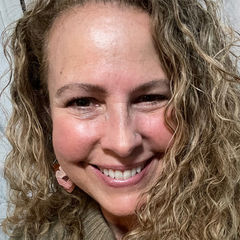




 by
by 